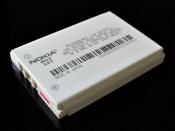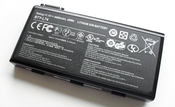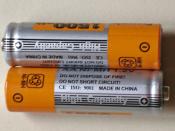________________________________________________________________________________________________________________ Professors Willy Shih and Clayton Christensen prepared this reading. Copyright © 2008 Harvard Business School Publishing. No part of this publication may be reproduced, stored in a retrieval system, used in a spreadsheet, or transmitted in any form or by any means-electronic, mechanical, photocopying, recording, or otherwise-without the permission of Harvard Business Publishing. Harvard Business Publishing is an affiliate of Harvard Business School.
SIMULATION FOREGROUND READING
Back Bay Battery, Inc.
Overview
The battery industry is enormous, with worldwide revenues of approximately $45 billion. It is highly fragmented with at least 20 manufacturers in each technology segment. Because of the wide range of applications of batteries, companies have tended to specialize in a particular technology or market application. Disposable batteries, such as the widely available carbon-zinc and alkaline cells, are available in standard sizes such as AA, C, and D, and they are a fast-moving consumer-good category with emphasis on manufacturing efficiency and scale, marketing and branding, and distribution efficiency.
One of the earliest forms of rechargeable battery was the wet lead-acid battery, the chemistry for which was invented in 1859. The application that drove this battery into prominence was to power a starter motor for vehicles, but today lead-acid batteries are commonly used for uninterruptible power supplies-in forklift trucks, golf carts, boats and submarines, and vehicles for indoor operation. They are inexpensive, albeit heavy. A variant on the lead-acid battery is the Gel Cell, which is a sealed lead-acid battery with a gelified electrolyte, allowing a higher degree of portability.
Smaller rechargeable batteries began as size-compatible replacements for disposable batteries and used technologies such as nickel-cadmium (NiCd), nickel-iron (Ni-Fe), nickel metal hydride (NiMH), lithium ion (Li-ion) and lithium polymer. As demands for portable electronic devices such as laptop computers, music players, and cellular telephone handsets rose, makers responded...


